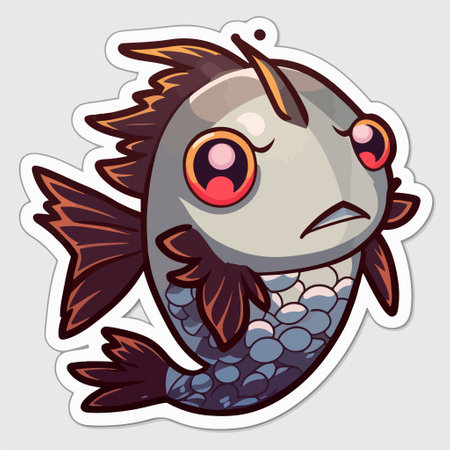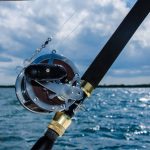1. Introduction to Fish Finder Mounting
Whether youre a weekend angler or a seasoned tournament pro, getting the most out of your fish finder starts with one critical step—mounting it correctly. How and where you install your fish finder can make or break your day on the water. A poor mounting job can lead to unstable readings, distorted sonar images, and hard-to-reach screens right when you need them most.
Why Proper Mounting Matters
Fish finders rely on sonar technology to give you real-time underwater visuals. For that sonar to work effectively, the transducer—the component that sends and receives sonar signals—needs to be mounted in a stable, unobstructed position. When its not properly secured or is placed in an area with turbulence or interference, your readings can become unreliable.
Key Factors Affected by Mounting
| Factor | Impact of Poor Mounting |
|---|---|
| Stability | Vibration or loose mounts can cause inaccurate readings and damage over time. |
| Sonar Clarity | If the transducer is angled incorrectly or obstructed, youll get blurry or incomplete images. |
| Accessibility | A hard-to-reach display makes it difficult to adjust settings while fishing. |
Matching Your Mount to Your Fishing Style
The best mounting option really depends on how and where you fish. Whether youre casting from a kayak, trolling for bass, or running offshore in a center console boat, different setups call for different mounting strategies. Some anglers prefer a hull mount for permanent stability, while others opt for portable options they can use across multiple vessels.
Common Boat & Mounting Combinations
| Boat Type | Recommended Mount Type |
|---|---|
| Bass Boat | Trolling Motor or Transom Mount |
| Kayak | Portable or Hull Mount (through-hull if compatible) |
| Center Console | Hull or Transom Mount |
| Pontoon Boat | Stern/Transom Mount with adjustable brackets |
Whats Coming Next?
This guide will walk you through the pros and cons of each major mounting type—Hull, Transom, Trolling Motor, and Portable—so you can choose the setup that fits your fishing lifestyle and boat layout best. Lets dive in and get your sonar system working at peak performance!
2. Hull Mounts: Permanent and Protected
Hull-mounted fish finders are a go-to choice for many anglers who want a clean, permanent setup—especially on fiberglass boats. These mounts place the transducer inside or through the hull of the boat, offering protection and a sleek profile that doesn’t interfere with fishing lines or underwater obstacles.
Advantages of Hull-Mounted Fish Finders
One of the biggest perks of using a hull mount is durability. Since the transducer is either glued inside the hull (shoot-through) or mounted through it (through-hull), its well protected from external damage. This type of mount also keeps your boat’s exterior smooth, reducing drag and preventing snags on weeds or debris.
| Advantage | Description |
|---|---|
| Protection | Transducer stays safe from bumps, rocks, and debris |
| Sleek Design | No external parts hanging off the boat hull |
| Reduced Drag | Improves fuel efficiency and boat handling |
| Permanent Setup | No need to reinstall every trip; ideal for serious anglers |
Limitations to Consider
While hull mounts offer great protection, they do come with some trade-offs. The most notable is signal loss. Shoot-through hull transducers must send sonar signals through solid fiberglass, which can weaken accuracy and detail. Also, installation is more involved and usually permanent—so if you upgrade your fish finder or change boats, reinstallation can be tricky.
| Limitation | Description |
|---|---|
| Signal Loss | Shoot-through models may lose sensitivity through fiberglass |
| Difficult Installation | Requires careful placement and possibly drilling into the hull |
| Lack of Portability | Permanently fixed; not suitable for switching between boats |
Installation Tips for Hull Mounts
Selecting the Right Location
The key to a successful hull mount is choosing a flat, solid section of fiberglass close to the centerline of the boat. Avoid areas near strakes, steps, or air pockets as these can distort sonar readings. The bilge area is often used but make sure it remains submerged even at high speeds.
Shoot-Through vs. Through-Hull Placement
| Type | Description | Best For |
|---|---|---|
| Shoot-Through Hull | Transducer glued inside the boat without piercing the hull | Ease of install; when moderate sonar detail is acceptable |
| Through-Hull Mount | Transducer installed by drilling a hole through the bottom of the boat | Maximum signal strength and accuracy; pro-level setups |
Maintaining Signal Clarity and Alignment
- Avoid Air Bubbles: Make sure no air gaps exist between the transducer and hull during installation.
- Straight Alignment: Double-check that your transducer faces directly downward for accurate readings.
- Cable Management: Keep wires secured and away from sources of electrical interference like pumps or batteries.
- Use Marine Epoxy: For shoot-through installations, use quality marine-grade epoxy to ensure a solid bond.
A properly installed hull-mounted fish finder can deliver dependable performance with minimal maintenance. It’s a great option for dedicated anglers who prioritize protection and clean rigging over portability or easy removal.

3. Transom Mounts: Versatile and Popular
Transom-mounted fish finders are a favorite among weekend anglers and casual boaters—and for good reason. They strike the perfect balance between simplicity, effectiveness, and affordability. Whether youre just getting started with sonar technology or looking for a hassle-free setup, mounting your transducer on the transom is one of the easiest ways to go.
Why Transom Mounts Are So Popular
The back of your boat—the transom—is one of the most accessible and visible places to mount a fish finder transducer. Heres why so many recreational anglers choose this method:
| Feature | Benefit |
|---|---|
| Easy Installation | No drilling into the hull; can be done with basic tools |
| Adjustability | You can tilt or slide the transducer for optimal performance |
| Affordability | No need for professional installation or specialized mounts |
| Simplicity | No need to access difficult areas of the boat |
Avoiding Common Issues with Transom Mounts
If not installed correctly, transom mounts can suffer from signal loss caused by turbulence or aeration—where air bubbles disrupt sonar readings. Here’s how to avoid these common pitfalls:
Turbulence and Aeration Fixes
- Avoid installing behind strakes, rivets, or steps: These areas create turbulent water that interferes with sonar signals.
- Mount on the starboard side: This is usually smoother-flowing water due to propeller rotation direction (for right-hand prop motors).
- Slightly below hull level: The bottom of the transducer should sit just below the bottom edge of your boat for clear readings.
Towing and Trailering Protection Tips
- Tilt up when trailering: Most brackets let you flip the transducer up to prevent road damage.
- Add a quick-disconnect bracket: Makes it easy to remove the unit when hauling long distances.
- Avoid parking on steep inclines: Prevents scraping if the transducer sits too low on the ramp or driveway.
The Bottom Line for Weekend Anglers
If youre fishing from a small boat, bass boat, or aluminum jon boat, a transom-mounted fish finder gives you reliable performance without overcomplicating things. It’s user-friendly, budget-conscious, and gets you on the water faster—with fewer headaches and more fish in your cooler.
4. Trolling Motor Mounts: Ideal for Shallow Water Fishing
Mounting a fish finder on a trolling motor is a game-changer for anglers who love shallow water fishing, especially those targeting bass. This setup allows you to scan the water directly in front of your boat, giving real-time feedback that’s perfect for navigating tight spots, weed beds, and rocky structures.
Why Choose a Trolling Motor Mount?
Trolling motor mounts are ideal for:
- Shallow Water Accuracy: Perfect for spotting fish and structure in low-depth areas where hull or transom mounts might not give clear readings.
- Hands-Free Operation: Since the transducer turns with the trolling motor, it naturally points wherever youre steering — making it easier to track fish while moving.
- Portable and Versatile: Easy to install or remove, especially on bow-mounted trolling motors common in bass boats.
Cable Management Tips
Good cable management is crucial to avoid tangles and protect your wires from wear. Here are some simple ways to keep things tidy:
| Tip | Description |
|---|---|
| Use Cable Wraps or Sleeves | Bundle your cables with velcro wraps or braided sleeves to keep them neat and organized. |
| Avoid Pinch Points | Route cables away from hinges or areas where they could get crushed when stowing the trolling motor. |
| Add a Cable Guard | A cable guard or hose can protect wiring from abrasion and UV exposure. |
Reducing Interference
If your sonar image is full of static or false readings, electrical interference might be the issue. Try these tips:
- Separate Power Sources: Run your fish finder and trolling motor off different batteries if possible.
- Use Ferrite Beads: Attach ferrite rings to power cables to filter out electrical noise.
- Shielded Cables: Upgrade to shielded transducer cables if interference persists.
Trolling Motor Compatibility Guide
Before buying a mount, make sure its compatible with your trolling motor brand. Heres a quick guide:
| Trolling Motor Brand | Compatible Fish Finder Brands | Notes |
|---|---|---|
| Minn Kota (with built-in MEGA Imaging) | Humminbird | Full integration via i-Pilot Link; plug-and-play with MEGA transducers |
| MotorGuide (with HD+ Sonar) | Lowrance | NMEA compatibility; requires adapter for other brands |
| Minn Kota (without built-in imaging) | Most major brands (Humminbird, Garmin, Lowrance) | Add-on brackets available for mounting external transducers |
Troubleshooting Common Issues
If you’re having trouble after installing your fish finder on a trolling motor, here are a few quick fixes:
- No Signal? Check the transducer cable connection and make sure its not pinched or damaged.
- Poor Image Quality? Make sure the transducer is aligned properly and isn’t blocked by debris or weeds.
- Trolling Motor Noise? Try lowering sensitivity settings or adjusting frequency modes on your unit.
5. Portable Mounts: Flexibility for Kayaks and Rentals
When youre fishing from a kayak, canoe, stand-up paddleboard (SUP), or even a rental boat, you need a fish finder setup thats as mobile and flexible as you are. Portable mounting options make it easy to bring your gear with you without drilling holes or making permanent modifications to the watercraft. Whether youre out for a weekend trip or hopping between different boats, these mounting solutions offer convenience and versatility.
Suction Cup Mounts
Suction cup mounts are one of the most popular portable options. They attach directly to smooth surfaces on kayaks, canoes, or small boats without requiring any tools. Theyre ideal for temporary setups and can be repositioned easily during your trip.
Pros:
- Quick and easy to install
- No drilling required
- Can be moved between different vessels
Cons:
- May not hold well on textured or dirty surfaces
- Not ideal in rough water conditions
Clamp Mounts
Clamp mounts work great for attaching your fish finder to the side of a rental boat or the gunwale of a kayak. Theyre sturdy and adjustable, allowing you to find the perfect angle for both the display unit and transducer.
Pros:
- Strong grip on flat surfaces
- Adjustable angles and positions
- Reusable across different setups
Cons:
- Might not fit all hull shapes or sizes
- Adds some bulk to your gear
Lithium Battery Packs for Portability
A portable mount isnt complete without a reliable power source. Compact lithium battery packs are lightweight and provide hours of power for your fish finder. Many anglers store them in waterproof cases or dry bags to keep everything protected.
Common Lithium Battery Specs:
| Battery Type | Voltage | Capacity (Ah) | Approx. Runtime |
|---|---|---|---|
| Lithium Iron Phosphate (LiFePO4) | 12V | 10Ah | Up to 12 hours (depending on unit) |
| Lithium Polymer (LiPo) | 12V | 7Ah | 6–8 hours (depending on usage) |
Ideal for Anglers On-the-Go
If youre an angler who likes to explore new waters without being tied down to a single boat, portable mounting solutions are the way to go. Theyre especially useful for travel, tournaments, or casual weekend outings where flexibility matters more than permanent installation.
Quick Tips for Portable Setups:
- Always test suction mounts before launching to ensure they’re secure.
- Cable management is key—use Velcro straps or clips to keep wires tidy.
- Pack extra batteries if youre planning a long day on the water.
- A small waterproof container can keep your display unit safe when not in use.
No matter what type of small watercraft youre using, theres a portable fish finder mount that can suit your needs while keeping your gear safe, organized, and ready to deploy in minutes.
6. Final Tips and Recommendations
Choosing the right fish finder mount isn’t just about picking a spot on your boat—it’s about matching your fishing style, boat type, and budget. Here are some expert tips to help you make the best decision and keep your setup running smoothly for seasons to come.
Match Your Mount to Your Boat Type
Not all boats are created equal, so your mounting method should reflect that. Heres a quick guide to help you choose the right mounting option:
| Boat Type | Recommended Mounting Option | Why It Works |
|---|---|---|
| Bass Boat | Trolling Motor or Bow Mount | Gives a clear view when casting from the front deck |
| Jon Boat / Small Aluminum Boat | Transom or Portable Mount | Easy to install and remove; budget-friendly |
| Kayak | Portable or Hull Mount (through-scupper) | Saves space and keeps gear secure in tight quarters |
| Offshore / Center Console Boat | Hull Mount (in-hull or through-hull) | More permanent solution; better performance at higher speeds |
Consider Fishing Conditions
Your typical fishing environment also plays a big role in choosing the right mount:
- Shallow Water: Trolling motor mounts work great for pinpoint accuracy in shallow lakes or rivers.
- Deep Water or Offshore: Hull mounts provide stability and uninterrupted signal, even in choppy conditions.
- Multiple Locations: Portable mounts let you switch boats or positions easily—perfect for weekend anglers.
Work Within Your Budget—But Plan Ahead
If youre just starting out, a transom or portable mount is affordable and easy to install. But if youre planning on upgrading your gear later, think about future compatibility. Some high-end fish finders work best with through-hull transducers and fixed mounts. Investing a little more upfront can save you time and money down the line.
Maintenance Tips to Keep Things Running Smoothly
- Inspect regularly: Check for loose bolts, corrosion, and wear after every few trips—especially in saltwater environments.
- Cable care: Secure cables with zip ties or cable clamps to prevent damage from movement or vibration.
- Cleansing routine: Rinse off saltwater residue and dirt buildup with fresh water after each trip.
- Avoid over-tightening: Too much torque on screws or brackets can crack plastic components or strip threads.
When Its Time to Upgrade or Reposition
Your fishing needs may change as you gain experience or add new tech to your boat. Here’s when you might consider an upgrade:
- You’re getting inaccurate readings at high speed—consider switching from a transom mount to a hull mount.
- You’ve added a second fish finder—reposition one unit for bow use while keeping another at the console.
- You’re targeting different species—move from shallow lake setups to deeper offshore rigs with more robust mounting options.
The key is staying flexible. As your skills grow and your gear evolves, don’t be afraid to experiment with different mounting styles until you find what works best for your fishing game.


